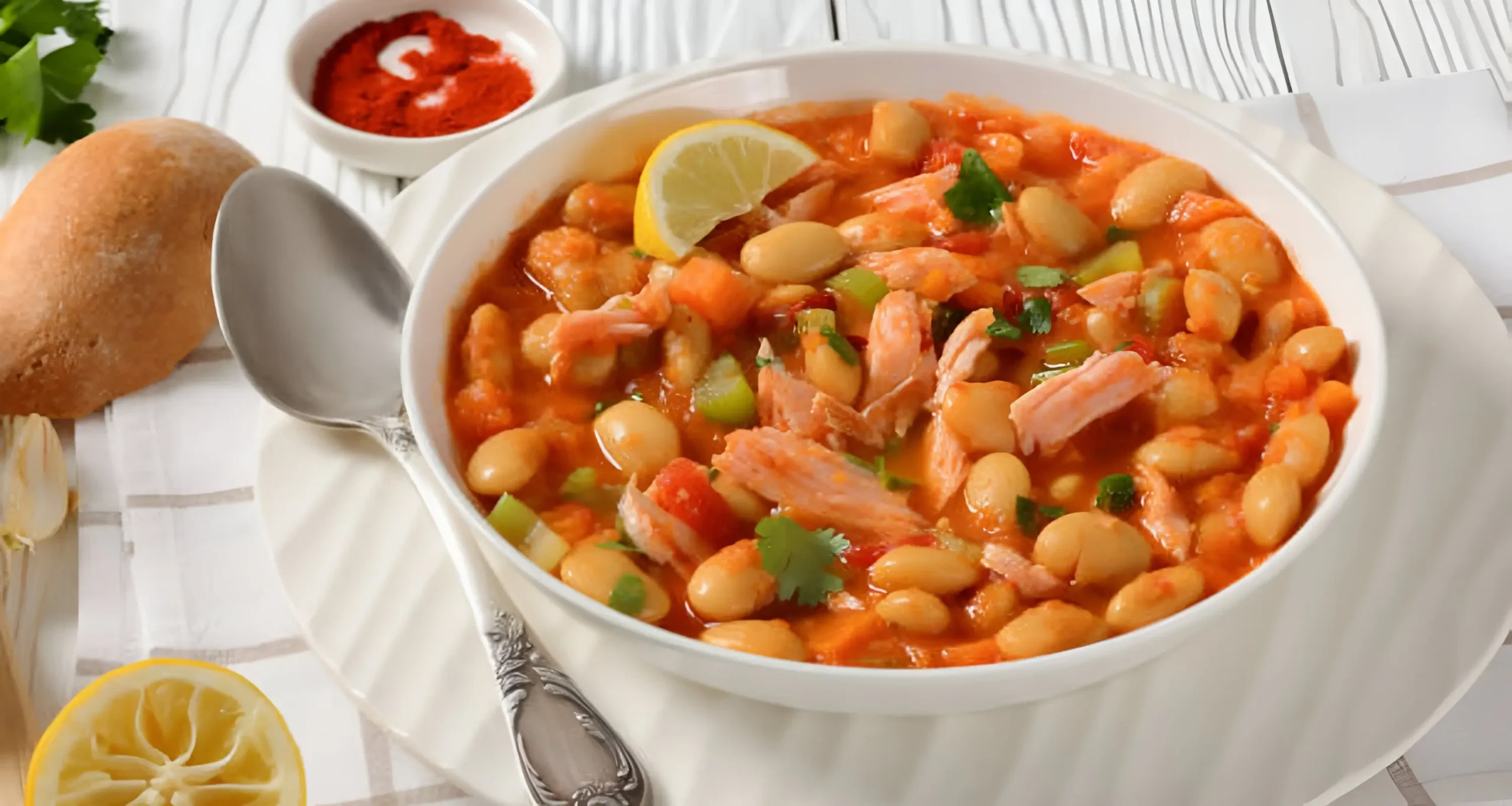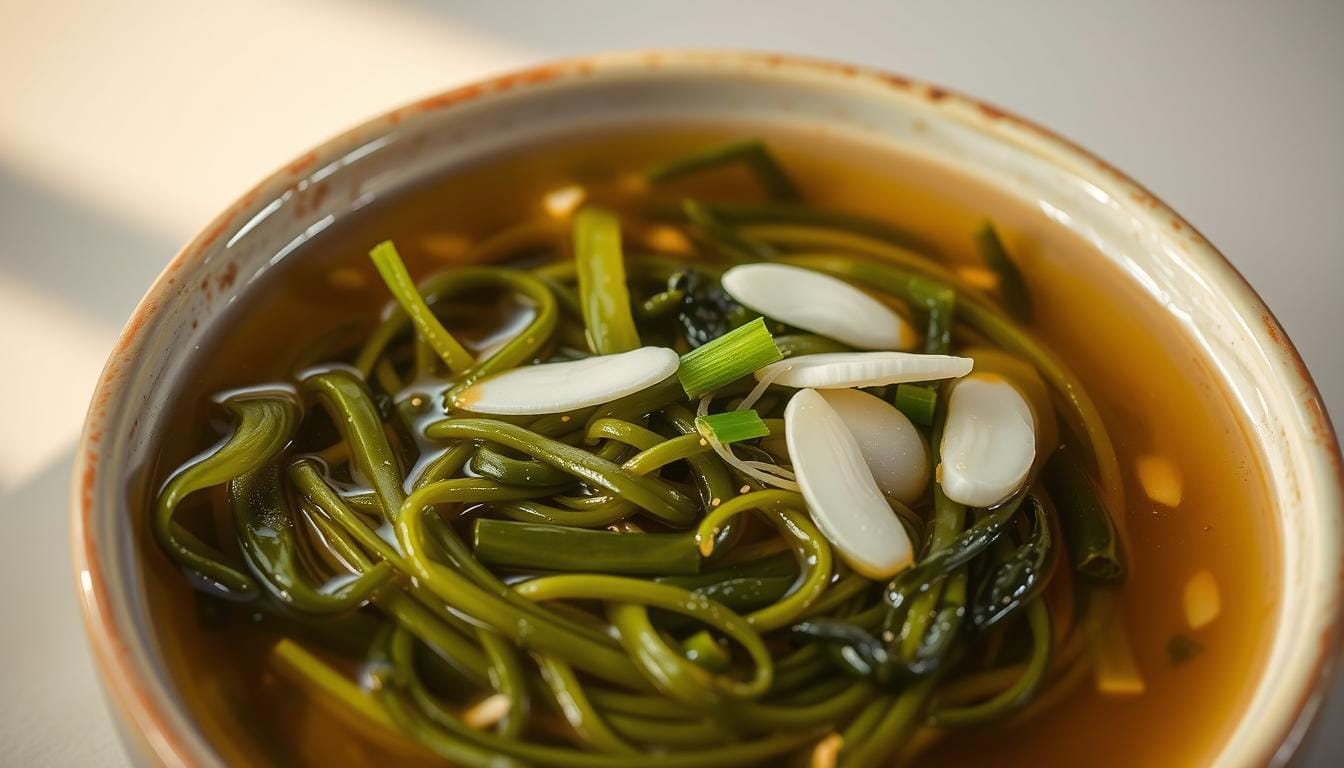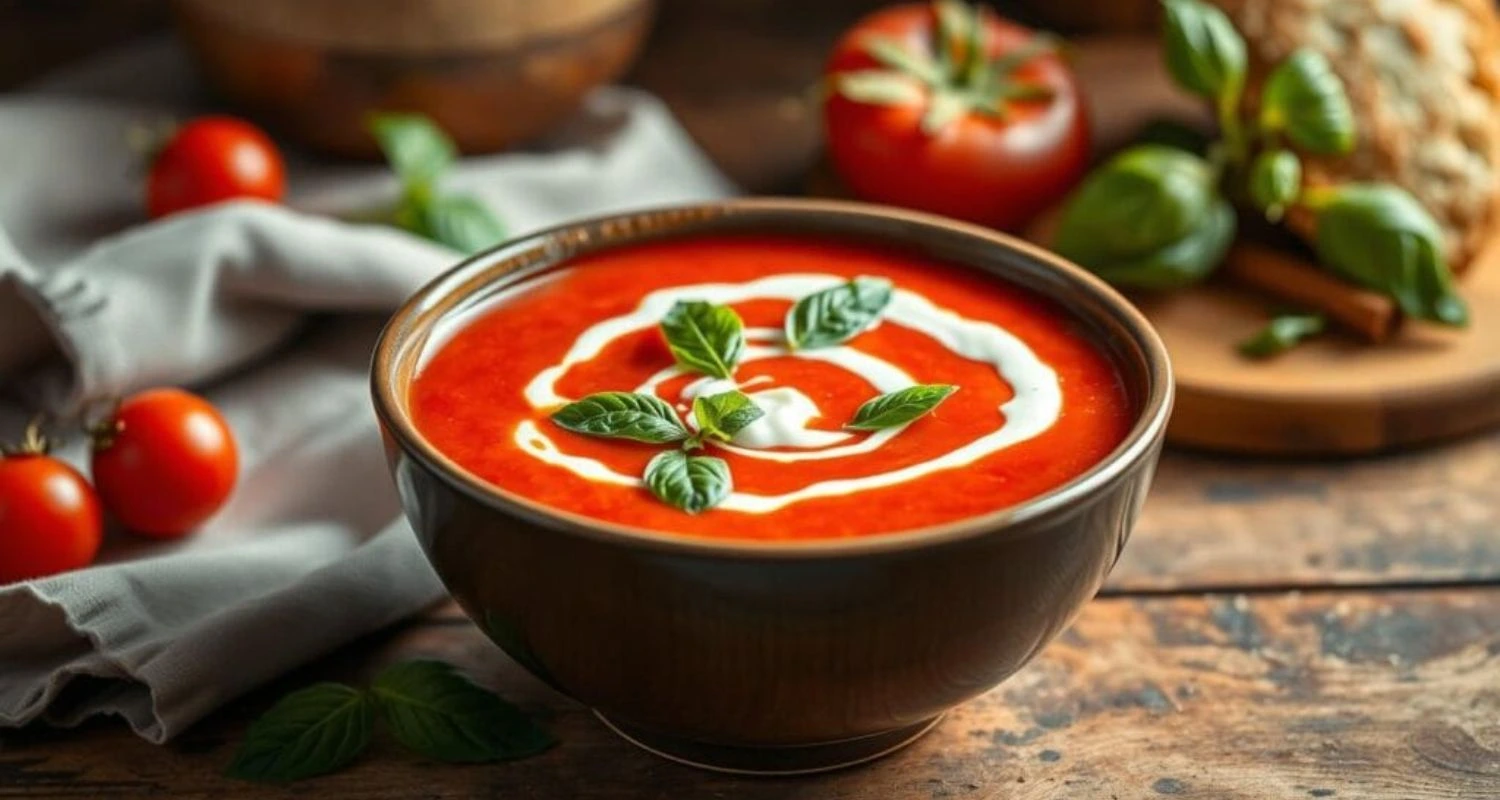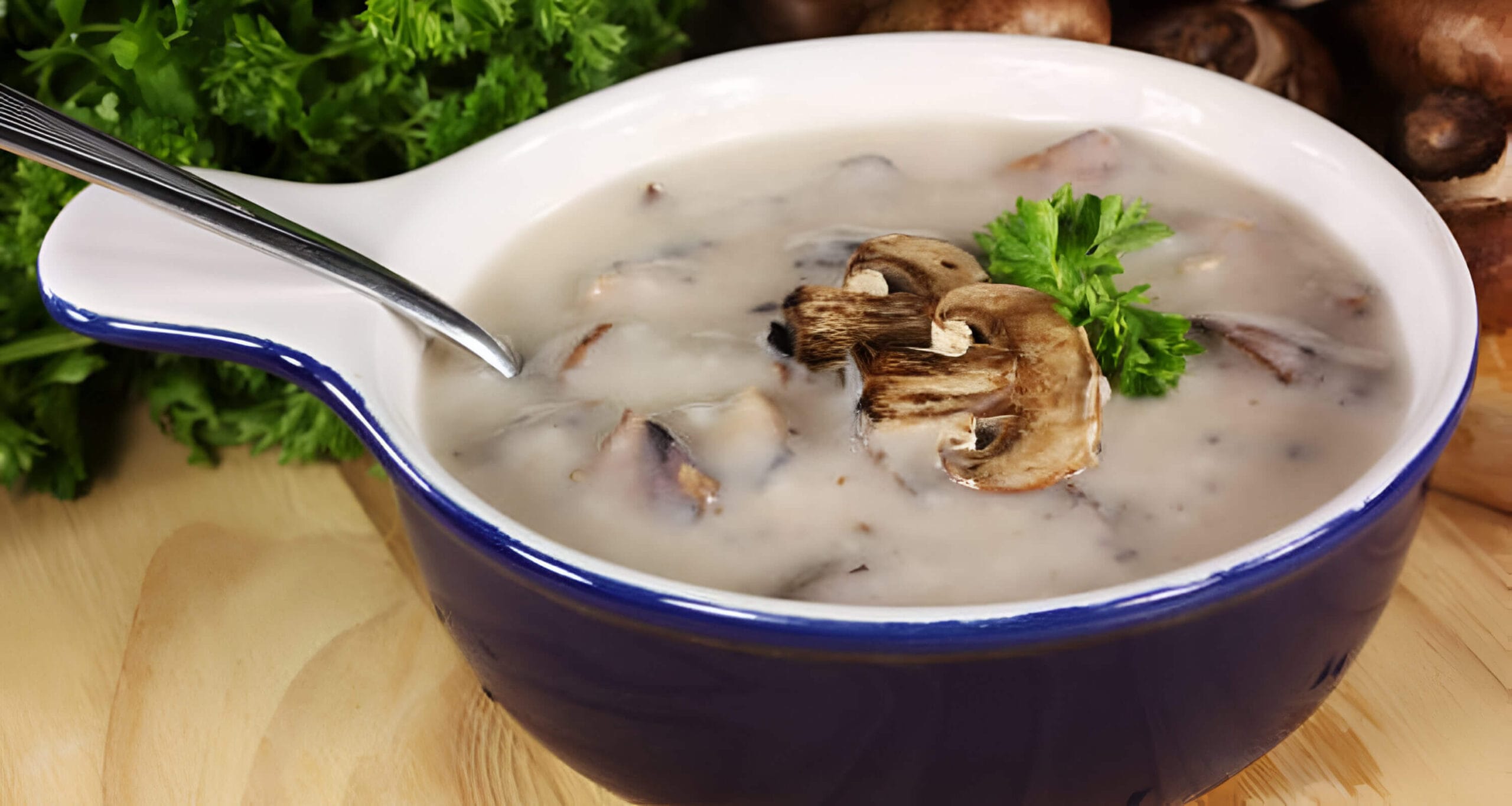Ultimate Dairy Free Soup: Bold Flavor & True Cozy Comfort

Looking for a warm, creamy soup without dairy? You’re in the right place. Dairy free soups have changed the game in comfort food. They offer rich flavors and satisfying textures, perfect for anyone looking for a healthier option.
Today’s kitchens are all about dairy free soup alternatives. They use plant-based ingredients and advanced cooking methods. Whether you’re watching your diet or just want to try something new, these soups are a tasty choice.
Find out how simple ingredients can make delicious, nutritious meals. These soups are more than just a substitute—they’re a journey of flavors and wellness.
Key Takeaways
- Dairy free soups offer nutritious and flavorful meal options
- Plant-based ingredients create creamy textures without dairy
- Suitable for multiple dietary restrictions and preferences
- Supports health-conscious and environmentally aware eating
- Versatile cooking techniques expand soup possibilities
Understanding the Rise of Dairy Free Soup Alternatives
The world of food is changing fast, with dairy free soup becoming very popular. People want healthier, greener choices that taste great and are good for them.
More and more, folks are paying attention to what they eat. They’re choosing gluten free and dairy free soups because they’re good for their health.
Health Benefits of Eliminating Dairy
Not eating dairy can make you feel better in many ways:
- Improved digestive comfort
- Reduced inflammation
- Enhanced gut microbiome
- Better skin health
Many find that dairy free foods help with lactose intolerance and allergies.
Environmental Impact of Dairy-Free Choices
Going dairy free is good for the planet too. Plant-based soups cut down on pollution and help the environment.
- Lower greenhouse gas emissions
- Reduced water consumption
- Decreased land use for animal agriculture
Growing Market Trends
The demand for dairy free soups is skyrocketing. People love trying new plant-based foods that taste amazing and are full of nutrients.
Plant-based alternatives are changing how we see classic comfort foods.
Essential Ingredients for Creating Rich, Creamy Dairy Free Soups
Making tasty gluten free soups without dairy is all about picking the right ingredients. You need to find plant-based alternatives that taste great and feel creamy.
Start with innovative milk substitutes. Coconut milk is a top choice for its rich, velvety feel. Cashew cream is another great option, making soups smooth without dairy.
- Coconut milk: Creamy and neutral flavor profile
- Cashew cream: Thick and luxurious texture
- Almond milk: Light and versatile base
- Nutritional yeast: Adds cheesy flavor without dairy
Adding umami-rich ingredients boosts your soup’s flavor. Miso paste brings deep savory notes. Nutritional yeast adds a cheesy taste. These ingredients turn simple soups into gourmet dishes.
Vegetable purees are key for thick, filling soups. Roasted butternut squash, pureed cauliflower, and blended white beans make soups thick and nutritious.
- Roasted butternut squash: Adds sweetness and thickness
- Cauliflower puree: Creates silky smooth texture
- White bean blend: Increases protein and creaminess
With these ingredients, you can make dairy free soups that are both healthy and delicious.
Mastering the Art of Dairy Free Soup Base
Making a tasty gluten free dairy free soup starts with a great base. The right base can turn your soup into something amazing. It makes the soup creamy and fulfilling, without dairy.
Starting to make amazing dairy free soups means knowing the key elements. These elements add depth and richness to your soup.
Plant-Based Stock Options
Choosing the right stock is key for your gluten free dairy free soup. Here are some top plant-based stock options:
- Vegetable stock made from roasted vegetables
- Mushroom broth for deep umami flavor
- Seaweed-based stocks for mineral-rich profiles
- Homemade herb-infused vegetable stocks
Flavor-Building Techniques
Boost your dairy free soup base with these expert tips:
- Roast vegetables before blending to enhance natural sweetness
- Use fresh herbs for aromatic depth
- Incorporate fermented ingredients like miso or tamari
- Layer spices incrementally during cooking
Seasoning Guidelines
| Flavor Profile | Recommended Seasonings | Intensity Level |
|---|---|---|
| Warm & Earthy | Smoked paprika, cumin, turmeric | Medium |
| Fresh & Bright | Lemon zest, fresh herbs, white pepper | Light |
| Rich & Complex | Nutritional yeast, dried mushrooms, garlic | Strong |
Creating a fantastic dairy free soup base takes time and trying new things. Feel free to tweak seasonings and try out different flavors. This will make your soup truly stand out.
Creative Substitutes for Traditional Dairy Products
Making a tasty gluten and dairy free soup is easy. You don’t have to give up on creaminess or flavor. Today’s kitchen tools offer amazing substitutes that make your favorite dishes rich and satisfying, without dairy.
Looking into dairy-free options opens up a new world of flavors for your soup. It’s all about finding the right substitutes for each recipe and cooking method.
Top Dairy Substitutes for Soups
- Coconut milk: Provides a smooth, creamy base with subtle sweetness
- Cashew cream: Creates rich texture without overwhelming flavors
- Nutritional yeast: Adds cheesy flavor and nutritional boost
- Nut-based cheeses: Delivers complex flavor profiles
When picking dairy replacements, think about what dairy does in your recipe. Some substitutes are better for thickening, while others add more flavor.
| Substitute | Best Used In | Flavor Profile |
|---|---|---|
| Coconut Milk | Creamy soups | Mild, slightly sweet |
| Cashew Cream | Puréed soups | Neutral, smooth |
| Nutritional Yeast | Cheese-like soups | Savory, cheesy |
Try out different substitutes to find your go-to dairy-free options. Each one has its own special qualities that can make your gluten and dairy free soup truly stand out.
Top Plant-Based Thickeners for Luxurious Texture
Creating rich, creamy gluten free soups recipes is all about mastering thickening without dairy. Plant-based thickeners can turn your soup from watery to luxurious. This gives you the perfect texture and mouthfeel.
Finding the right thickening technique can make your dairy-free soup amazing. It’s all about knowing which natural agents work best for different soups.
Natural Thickening Agents
- Pureed Vegetables: Potatoes, cauliflower, and squash create creamy bases
- Starches: Arrowroot, cornstarch, and potato starch
- Nuts: Cashew cream and almond flour
- Seeds: Ground chia and flax seeds
Application Methods
Each thickener needs a specific method to blend smoothly into your gluten free soups. Some need gradual whisking, while others require careful blending.
| Thickener | Best Used In | Recommended Quantity |
|---|---|---|
| Arrowroot | Clear soups | 1-2 tbsp per 4 cups |
| Pureed Vegetables | Creamy vegetable soups | 1/2-1 cup blended |
| Cashew Cream | Rich, hearty soups | 1/4-1/2 cup |
Troubleshooting Tips
To avoid lumpy textures, follow these simple tips:
- Mix dry starches with cold liquid before adding to hot soup
- Whisk continuously while adding thickeners
- Add thickeners gradually to control consistency
- Use a blender for smooth vegetable-based thickeners
Pro tip: Always taste and adjust seasoning after thickening to maintain the soup’s flavor profile.
Must-Have Equipment for Perfect Dairy Free Soup

Making delicious dairy free soup is more than just using great ingredients. The right kitchen tools can change your cooking experience. They help you make your soups smooth and flavorful.
Choosing the right kitchen equipment is key. Whether you’re a pro or a home cook, you need a few essential tools. These tools help you get smooth, tasty results.
- High-Powered Blender: Essential for creating ultra-smooth dairy free soup purees
- Immersion Blender: Convenient for direct in-pot blending
- Large Stockpot: Perfect for simmering and developing rich flavors
- Fine-Mesh Strainer: Ensures silky texture without lumps
Specialized tools can also improve your soup-making. A good slow cooker lets you cook without much effort. It helps develop deep flavors. Nut milk bags help you make plant-based milks for creamier soups.
Get a reliable spice grinder for fresh, aromatic seasonings. Grinding your own spices can make your soups taste better. It makes each batch special and tasty.
Pro tip: Quality tools are an investment in your culinary creativity!
You don’t have to spend a lot to get the right tools. Start with versatile tools that can do many things. They’re great for making different types of dairy free soups.
Quick and Easy Dairy Free Soup Recipes
Looking for tasty gluten free soup that’s quick to make? You’ve found the right spot! Dairy free soups are not only fast to prepare but also super satisfying. Whether you’re in a hurry or planning meals ahead, these recipes will make your kitchen a cozy haven.
Busy cooks know how hard it is to make healthy meals fast. These recipes show that dairy free soups can be easy and yummy.
30-Minute Comfort Soups
Time is valuable, and these gluten free soup recipes get that. Each dish is ready in under 30 minutes, ideal for quick weeknight meals:
- Roasted Vegetable Purée
- Lentil and Spinach Soup
- Butternut Squash Bisque
Make-Ahead Options
Meal prep is easy with these dairy free soup tips. Make big batches that last all week.
| Soup Type | Prep Time | Storage Duration |
|---|---|---|
| Minestrone | 45 minutes | 5-7 days refrigerated |
| Tomato Basil | 30 minutes | 4-5 days refrigerated |
Freezer-Friendly Varieties
Some soups freeze really well, making a quick meal ready at any moment. Here are some tips for freezing dairy free soup:
- Cool completely before freezing
- Use freezer-safe containers
- Leave space for expansion
- Label with date and contents
These dairy free soup recipes show that you don’t have to give up taste or convenience because of dietary needs. Dive into these tasty, healthy options!
Seasonal Ingredients for Year-Round Dairy Free Soups
Creating tasty gluten free soups all year starts with knowing seasonal produce. Each season brings special flavors and nutrients. These can make your dairy free soup recipes stand out.
Spring is full of fresh ingredients perfect for light, vibrant soups. Think about these seasonal stars:
- Asparagus
- Fresh peas
- Tender spring onions
- Young spinach leaves
Summer brings a lot of fresh veggies that can make your soups better. Zucchini, tomatoes, and corn are great for soups that taste fresh.
“The key to amazing soups is using ingredients at their peak freshness.” – Professional Chef
Autumn brings hearty root veggies for rich, comforting soups. Butternut squash, pumpkin, and sweet potatoes add creamy textures without dairy. They’re perfect for cozy meals.
Winter is for strong ingredients that warm and nourish. Root veggies like parsnips, carrots, and winter squash are great for soups.
Pro tip: Frozen veggies are great when fresh ones aren’t available. They keep nutrients and taste great in soups.
- Always choose organic when possible
- Wash vegetables thoroughly
- Cut vegetables uniformly for even cooking
By using seasonal ingredients, you’ll make dairy free soups that are both healthy and amazing all year.
Gluten and Dairy Free Soup Combinations
Finding gluten and dairy free soup can be tough. Hidden ingredients can surprise you. It’s key to know how to read labels and spot allergens.
Looking for gluten and dairy free soups means being a detective. Many foods hide gluten and dairy. These can cause allergic reactions or dietary issues.
Decoding Food Labels Like a Pro
- Check for certified gluten-free labels
- Look for dairy-free certification marks
- Scan ingredient lists carefully
- Watch for possible cross-contamination warnings
Common Hidden Ingredients to Avoid
Some ingredients can ruin your gluten and dairy free soup plans. Be careful of these:
- Whey protein (dairy)
- Malt extract (gluten)
- Modified food starch
- Casein (milk protein)
- Hydrolyzed wheat protein
“Knowledge is power when it comes to managing dietary restrictions.” – Nutrition Expert
Be careful with what you choose. If unsure, ask the maker or pick whole foods you know are safe.
Safe Substitution Strategies
Use coconut milk, almond milk, or nutritional yeast to keep your soups tasty. Always check labels and put your health first.
Tips for Meal Prepping Your Dairy Free Soups
Meal prepping gluten free dairy free soup can change your cooking routine. It saves time and makes sure you have healthy meals ready. By planning ahead, you can make a variety of soups without spending too much time.
Successful soup meal prep starts with understanding key strategies:
- Batch cook base recipes that can be easily modified
- Prep and store ingredients separately to maintain freshness
- Utilize freezer-friendly containers for long-term storage
- Create versatile soup bases that adapt to different flavor profiles
Your meal prep workflow should focus on efficiency and flexibility. Choose recipes that can be easily transformed with simple ingredient swaps. For example, a basic vegetable broth can become different soups by changing spices and add-ins.
| Prep Step | Time Saved | Key Benefit |
|---|---|---|
| Chopping vegetables | 30-45 minutes | Quick weeknight meal assembly |
| Making stock | 1-2 hours | Customized flavor base |
| Portioning | 15-20 minutes | Easy grab-and-go meals |
Pro tip: Label your containers with the date and soup type to keep track of your delicious dairy free soup creations.
“Meal prep is not about perfection, it’s about progress and making healthy eating easier.” – Unknown Nutrition Expert
By using these strategies, you’ll change how you prepare gluten free dairy free soups. Spend a little time upfront for easy, healthy meals all week.
Storing and Freezing Guidelines for Maximum Freshness
Keeping your gluten free soups fresh is key. The right storage and reheating can make them taste as good as new. This way, your homemade soups stay delicious for a long time.
Choosing the right container is important. It helps keep your soups fresh and flavorful. The wrong container can lead to a loss of taste.
Optimal Storage Container Selection
- Glass containers with tight-fitting lids
- BPA-free plastic containers with airtight seals
- Silicone storage bags for flexible space-saving
- Ceramic containers with protective lids
Freezing Techniques for Long-Term Preservation
Freezing your soups right is essential. Here’s how to do it:
- Cool soup completely before storing
- Leave 1-inch space at the top for expansion
- Label containers with date and soup type
- Use within 3-4 months for best quality
Reheating Strategies
Here’s how to reheat your soups:
- Stovetop: Slow, even heating preserves texture
- Microwave: Stir frequently to distribute heat
- Add fresh herbs or a splash of acid to brighten flavors
- Avoid repeated freezing and thawing
Follow these tips to keep your soups fresh and tasty. They’ll be ready for you whenever you need a meal.
Nutritional Benefits of Dairy Free Soup

Dairy free soup is a nutritional powerhouse. It makes your meals healthy and satisfying. These soups are a great way to get important nutrients without dairy.
Looking into dairy free soup shows many health benefits:
- Rich in plant-based proteins
- High in dietary fiber
- Low in saturated fats
- Packed with essential vitamins and minerals
Your body gets many benefits from dairy free soup. It’s made with veggies, legumes, and proteins. This mix makes a meal that’s good for your health. It’s great for people with dietary limits or who want to eat healthier.
| Nutrient Category | Key Benefits | Typical Sources |
|---|---|---|
| Protein | Muscle maintenance and repair | Beans, lentils, tofu |
| Fiber | Digestive health and satiety | Vegetables, whole grains |
| Vitamins | Immune system support | Leafy greens, root vegetables |
Dairy free soup can be a game-changer for your nutritional intake. By choosing the right ingredients, you can make soups that are tasty and nutritious. They support different dietary needs well.
“Nutrition is not about being perfect. It’s about eating food that makes you feel great.” – Unknown
Dairy free soup is great for vegan, paleo, or health-focused diets. It’s versatile, letting you try new ingredients. This way, you can keep your meals balanced and healthy.
Troubleshooting Common Dairy Free Soup Challenges
Making the perfect gluten free or dairy free soup can be hard. Even skilled cooks face problems when making these tasty alternatives. Learning to fix common texture and flavor issues will help you make soups that are just as good as the originals.
Making a dairy free soup needs special tricks for a rich, smooth taste. Texture is key, so knowing how to fix problems is important.
Texture Solutions for Smooth Dairy Free Soups
- Use cashew cream to create a silky base without dairy
- Blend vegetables thoroughly to achieve a creamy consistency
- Incorporate natural thickeners like pureed potatoes or cornstarch
- Strain soups with a fine-mesh sieve for ultra-smooth texture
Flavor Enhancement Strategies
To get deep, complex flavors in a dairy free soup, pick the right ingredients. Try these tips to boost your soup’s taste:
- Roast vegetables before adding to intensify natural sweetness
- Use nutritional yeast for a cheesy, umami-rich taste
- Experiment with herbs and spices to add depth
- Add a splash of acid like lemon juice or vinegar to brighten flavors
Remember, making great dairy free and gluten free soup takes time. Don’t worry if your first tries aren’t perfect. Every batch is a chance to get better and find new flavors.
International Dairy Free Soup Inspirations
Exploring global cuisine shows us a world of gluten free soups without dairy. Different cultures have found ways to make rich, tasty soups without dairy. These soups excite our taste buds without using traditional dairy.
Asian cuisines are full of amazing dairy free soups. Thai coconut soups are creamy without using dairy. Japanese miso soup is packed with umami and is completely dairy-free.
- Thai Coconut Soup: Creamy without dairy
- Japanese Miso Soup: Protein-rich alternative
- Middle Eastern Lentil Soup: Hearty plant-based option
Middle Eastern cooking is great at making gluten free soups. They use legumes and veggies to make soups that are full of nutrients. Lentil soups are a great example of how to make a dairy free soup that’s full of flavor.
“Great soup transcends dietary restrictions – it’s about understanding ingredients and technique.” – Chef International Culinary Association
Ingredients like coconut milk and vegetable stocks make soups creamy and rich. Learning how to make soups from around the world lets us turn dietary limits into exciting meals.
Exploring global dairy free soups opens up a world of tasty, healthy meals. It celebrates different cultures and creative cooking.
Conclusion
Creating gluten free soups is a fun journey that makes your kitchen a place of creativity and health. Dairy free soups bring a world of taste, health, and care for the planet. With the tips and recipes from this article, you can make tasty soups that are good for you.
Starting to make dairy free soups is about being creative and caring for your health. These recipes are great for anyone who needs to avoid certain foods or wants to eat healthier. You’ll learn to use plant-based ingredients and find new ways to make soups that are both healthy and delicious.
Getting better at making dairy free soups takes time and practice. Every soup you make helps you learn about flavors, textures, and your own cooking style. We encourage you to try new things, share your soups with others, and enjoy the joy of cooking for everyone.
Your cooking journey is just beginning. Keep exploring, learning, and making new dairy free soups. Use what you’ve learned to make even more delicious soups and enjoy the process of creating.
FAQ
Are all dairy free soups automatically gluten free?
No, they’re not. Even if a soup is dairy free, it might have gluten. This could come from wheat-based stocks or flour thickeners. Always check the ingredients to make sure it’s both dairy and gluten-free.
What are the best plant-based milk alternatives for creating creamy soups?
Coconut milk, cashew milk, and almond milk are great for creamy soups. Each has its own taste and texture. Coconut milk is perfect for Thai soups, while cashew milk is good for many recipes.
How can I thicken a dairy free soup without using cream?
Use natural thickeners like pureed veggies, arrowroot powder, or cornstarch. Roasted and pureed cauliflower or potatoes make soups thick and creamy without dairy.
Can I freeze dairy free soups?
Yes, most dairy free soups freeze well. Use airtight containers and leave space for expansion. Soups with potatoes might change texture, but they’ll taste great when reheated.
What protein sources work well in dairy free soups?
Good protein sources include tofu, lentils, beans, quinoa, and chickpeas. They add protein and improve the soup’s texture and nutrition.
How long can I store homemade dairy free soup in the refrigerator?
Homemade dairy free soups can last 3-5 days in the fridge. Keep them in an airtight container. Always check for spoilage before reheating.
Are there any common allergens I should watch out for in dairy free soups?
Yes, watch out for nuts, soy, wheat, and shellfish. Always read labels, even if you’re making the soup yourself. This is important for those with food allergies.
What are some budget-friendly ingredients for making dairy free soups?
Use dried beans, lentils, and seasonal veggies for cheap soups. Carrots, potatoes, canned tomatoes, and frozen veggies are also affordable. They help make delicious soups without spending a lot.
Add a Dash of Your Thoughts!
There are no reviews yet. Be the first one to write one.






